Montblanc Villeret 1858 Vintage Chronograph Reviewed by Tim Mosso
by Tim Mosso
It is important to distinguish between collecting watches and collecting brands. Many estimable connoisseurs who fancy themselves collectors of watches are, in fact, collectors of brands. That’s not to say these folks adhere to brand monogamy or refuse to admire options beyond their comfort zone.
Nevertheless, when the time comes to send a wire, they gravitate towards orthodox nameplates and confine their choices to that pool.
Admittedly, it takes a leap of faith to buy a costly watch from a company known for something other than timepieces. That goes double when a pen specialist produces tens of thousands of Omega-priced watches for every hundred haute horlogerie products it issues.
But when the prize at hand is as alluringly beautiful as this chronograph, orthodoxies collapse and prejudice melts away.
Montblanc watch branding officially kicked off in 1997, but the company’s watchmaking came of age in the late 2000s. By that point, the Richemont-owned luxury juggernaut was ready to mount a sustained two-front offensive.
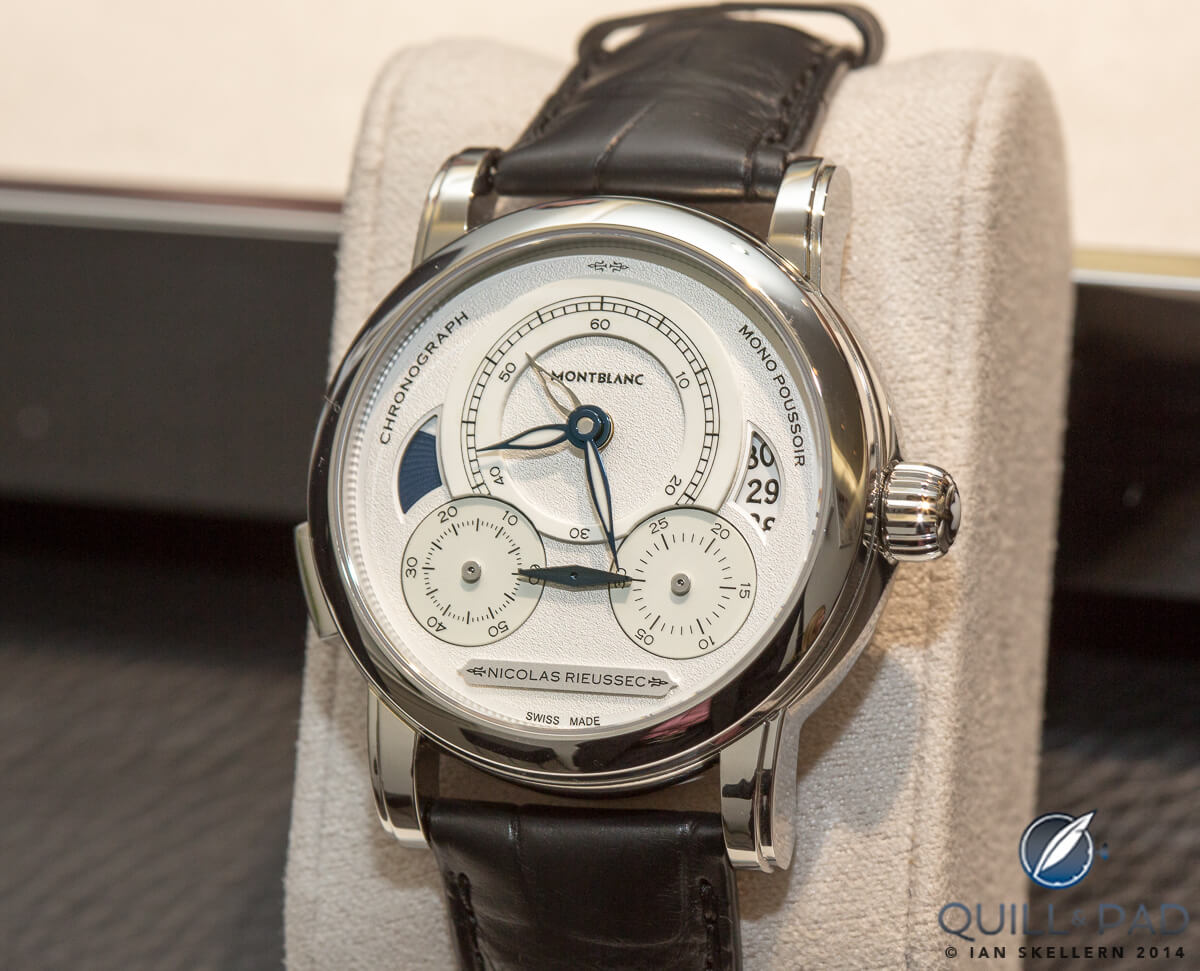
Montblanc Homage to Nicolas Rieussec monopusher chronograph
The Le Locle workshop from which Montblanc staged its 1997 foray had been modernized, expanded, geared up for 100,000 units per year, and primed to launch the Nicolas Rieussec Monopusher Chronograph – that factory’s flagship.
————————————————————————————————————–
—————————————————————————————————–
But Montblanc’s Villeret workshop, the historic base for Fabrique d’Horlogerie Minerva SA, had its own agenda. Despite a history dating back to 1858, the modern era of Minerva began under Italian ownership around the year 2000. What followed was a relentless upmarket push with prices and positioning to match.
Truth be told, these years have a reputation for managerial controversy juxtaposed to virtuoso-level watchmaking under creative lead and master watchmaker, Demetrio Cabiddu. Against that backdrop, Richemont’s October 2006 purchase of the brand provided a rare hand-in-glove fit between a monster luxury group and a small artisanal manufacture.
In a stroke, the boardroom tumult and uncertainties began to recede, and resources became available. But a positive outcome was far from certain in the moment. Suspicions of the worst seemed confirmed with the 2007 announcement that Minerva would become the high-luxury organ of Montblanc.
The result was surprisingly benign as Montblanc elected to keep most of Minerva’s name, workshops, and billing intact; significant renovations of the Villeret manufacture followed in 2008. By 2010, the newly renamed “Institut Minerva de Recherche en Haute Horlogerie” was on a footing to launch our featured limited edition Villeret 1858 Vintage Chronograph.
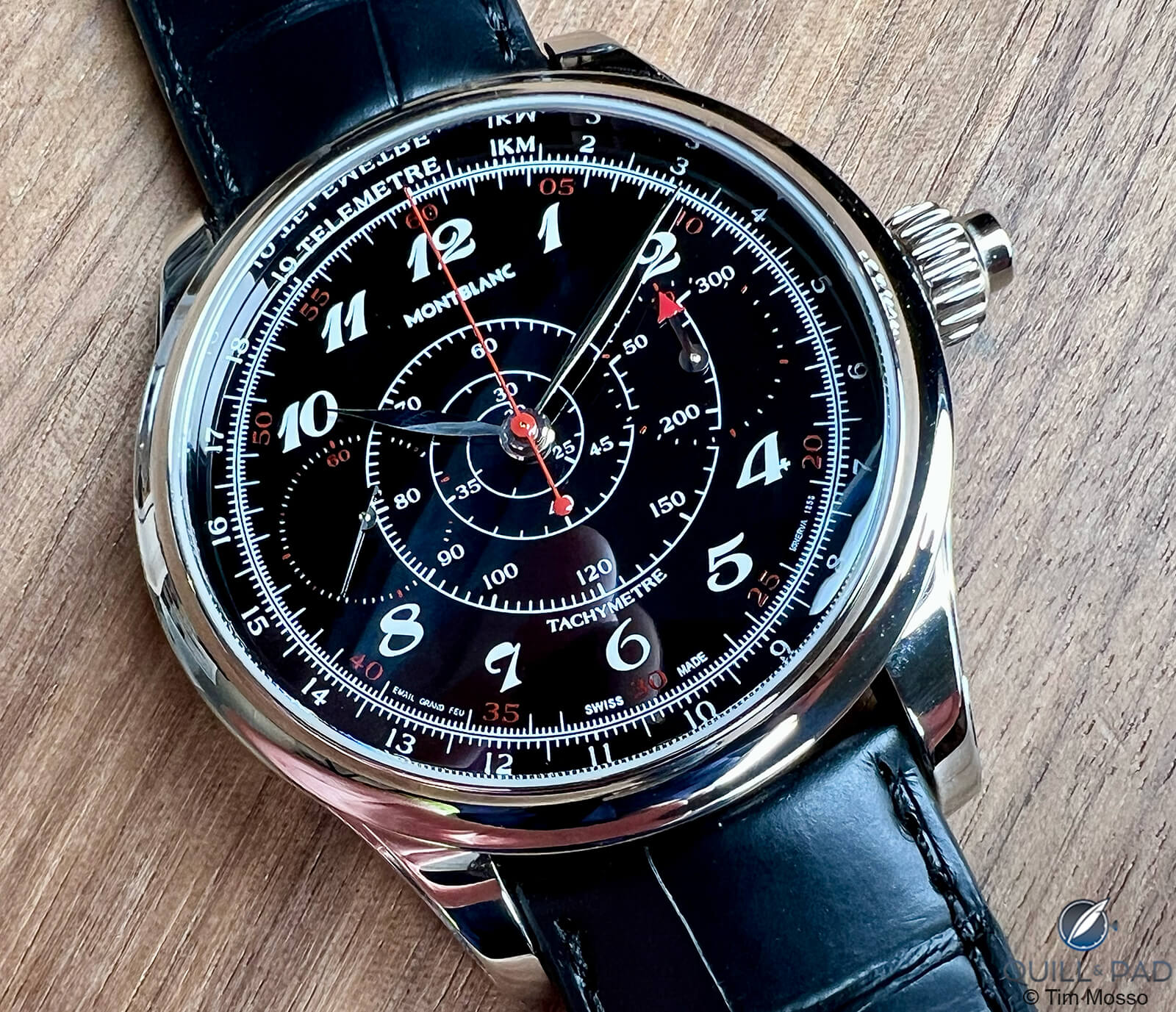
Montblanc Villeret 1858 Vintage Chronograph
This series of 116 watches – 58 in rose gold, 58 in white gold – plays to Minerva’s historic strengths in chronograph calibers and its relatively recent upmarket arrival.
—————————————————————————————————–
—————————————————————————————————–
Topside, Montblanc’s 43.5mm Vintage Chronograph sets the stage for its marvelous mechanism within. Cost-no-object refinements like grey gold — no rhodium here — and a mother-of-pearl crown insert confirm that this watch is an image-builder for the larger house of Meisterstück.
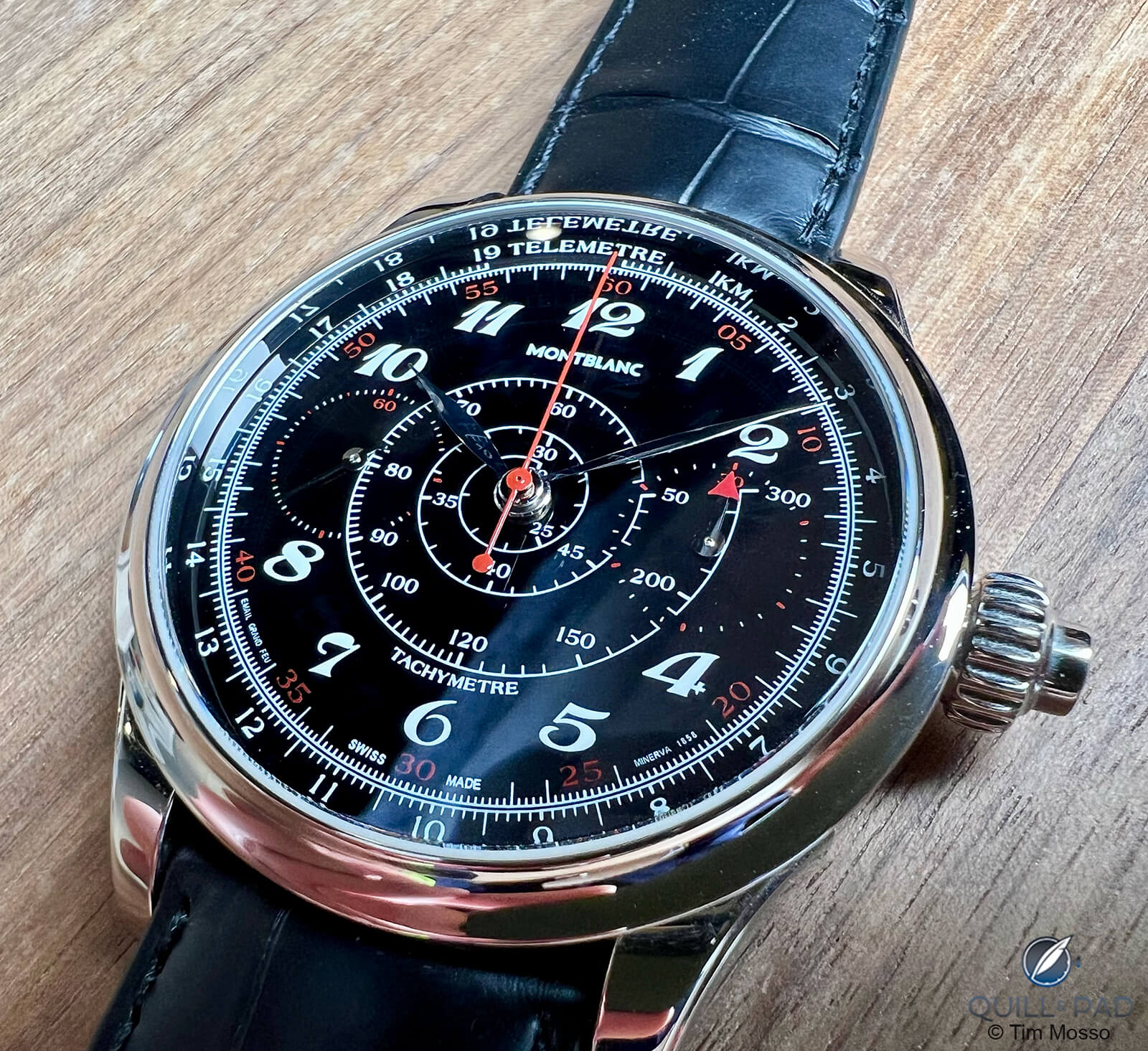
Montblanc Villeret 1858 Vintage Chronograph
And the sprawling twin-scale dial looks almost menacing across its expanse of gloss black enamel. Montblanc artfully combined Breguet-style Arabic numerals, a snailed central tachymeter, and a peripheral telemeter scale to impart a suitable first-third twentieth-century aesthetic. Thanks to a movement with pocket watch roots, the sub-registers are properly spaced and scaled to fit this enormous dial.

Montblanc Villeret 1858 Vintage Chronograph
This is a good time to note that all enamel is not created equal. A Seiko Presage might offer enamel at prices barely above the realm of fashion watches, but its flaws around hands, pinions, and date windows are visible even at arm’s length. White enamel is often favored, even by extremely posh brands, because it reveals as little of enamel’s inherently rippled texture as possible.
Ever wonder why even Patek Philippe 5016 dials were made mostly in white when enamel was chosen? You guessed it; white hides flaws. Every 5016 — priced like a house — that I’ve ever encountered with a black dial used… lacquer. And then there’s the grand feu enamel on this Montblanc. It reads like still water – not the usual baked vitreous orange peel. It’s indistinguishable from lacquer. And that’s just the table-setter.
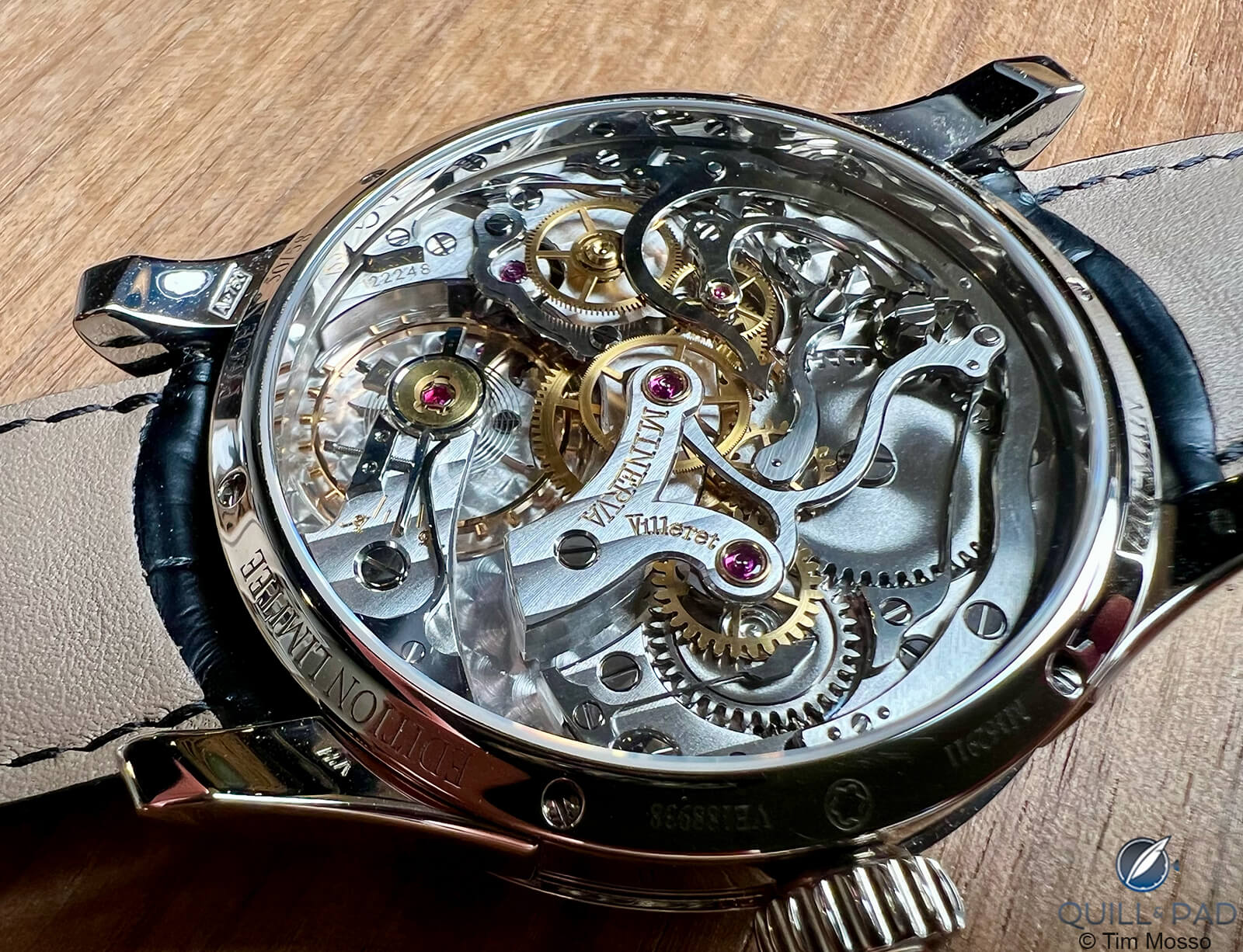
The Minerva caliber 16.29 powers the Montblanc Villeret 1858 Vintage Chronograph
Minerva caliber 16.29 is why you buy this watch. It’s a modern movement with engineering roots in the 1920s, and this shows to spectacular effect. The slow-beating 2.5Hz balance wheel is nearly the radius of the 38mm+ caliber, and it pulses in sync with a hand-formed overcoil hairspring. Nobody regrets the industrial-spec vertical clutch, because there isn’t one. A glorious hand-tuned lateral clutch engages via a crenelated wheel of black-polished columns.
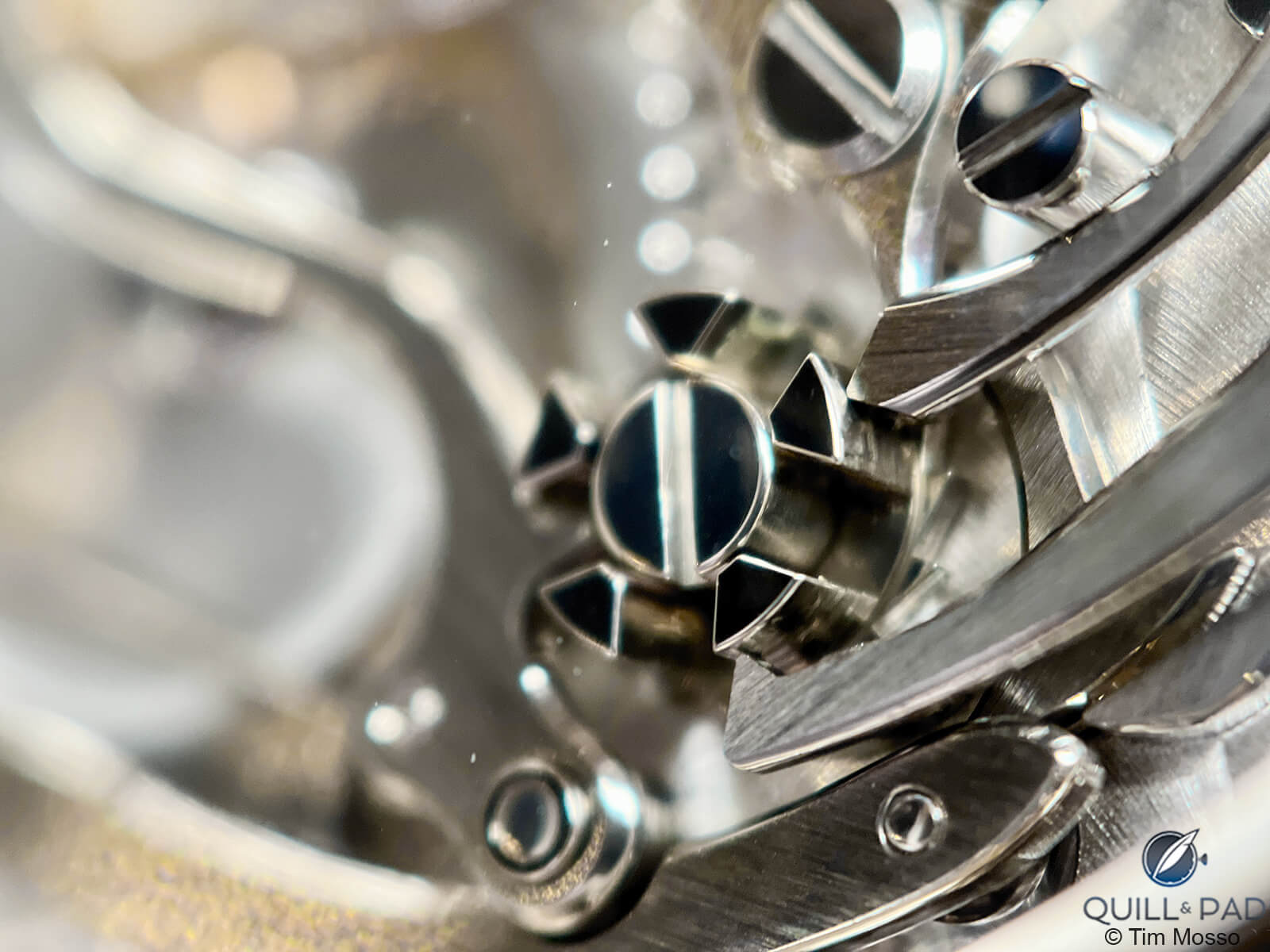
Column wheel of the Minerva caliber 16.29
Manually indexing that column wheel evokes the door pull of a 1980s Mercedes S-Class and speaks with the voice of a rivet gun in the distance. Try it; this is the tactile feedback a watch collector could spend a lifetime seeking from more established watch brands — and never find.
—————————————————————————————————–
—————————————————————————————————–
Not going anywhere for a while? Grab a Snickers — and a loupe. As with enamel, not all haute horlogerie bienfacture rates equally. Minerva’s work isn’t as well-known as that of arriviste independents like Greubel Forsey, Romain Gauthier, Lang & Heyne, or Grönefeld, but Villeret’s finest warrants these comparisons.
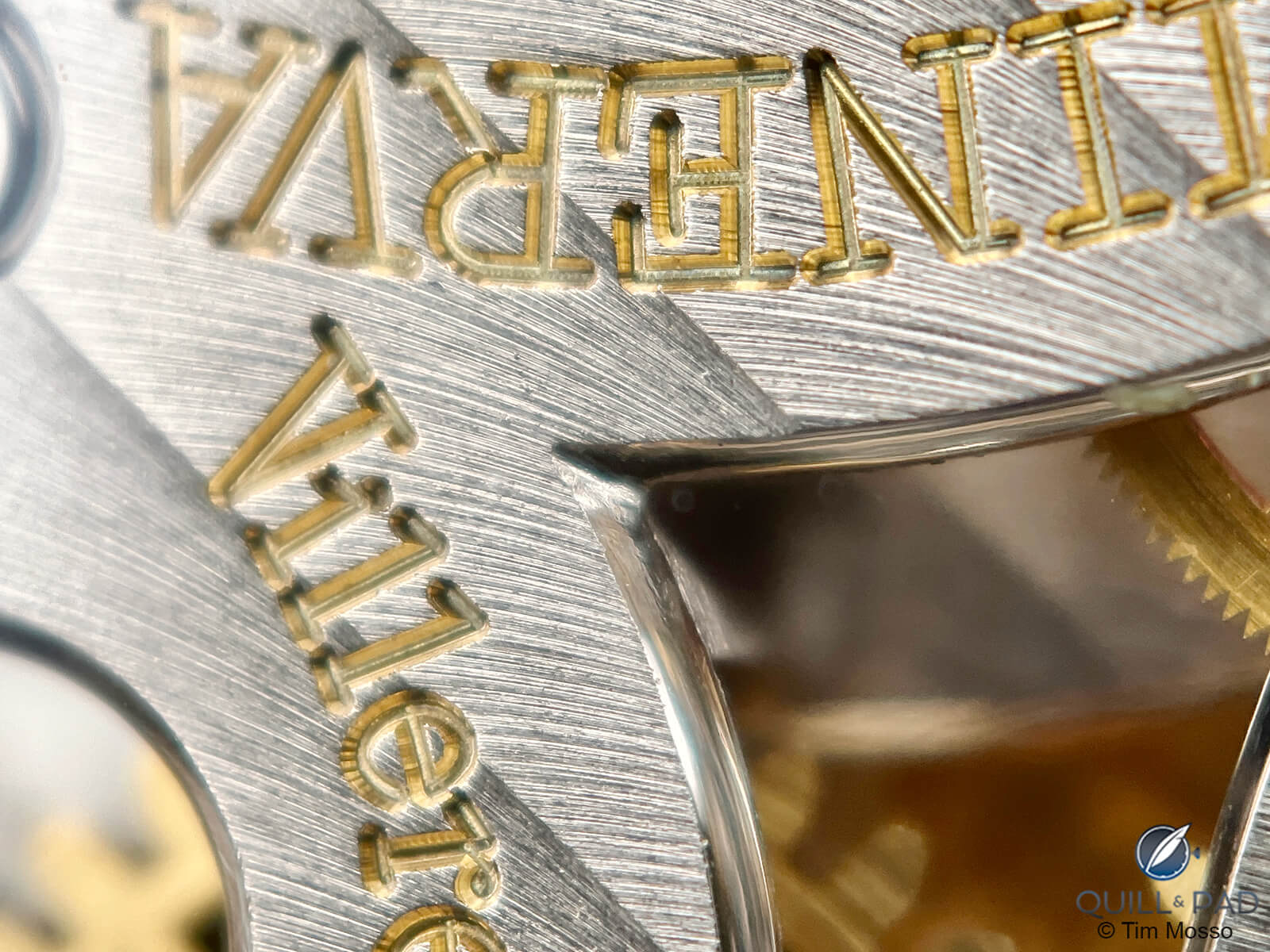
Mirror polished anglage of the Minerva caliber 16.29
Start with the chronograph bridge. The cleft between pivots is as sharp as if it had been drawn by a blade; there’s probably a photo of it in some arcane watchmaking reference under the entry “angle intérieur.” Seriously, this sharpened recess and the mirrored waterfall bevels beside it are a case study in the difference between good finish and great finish.
Good is what you get in a few thousand Vacheron Overseas per year; virtuosity is what Minerva achieves in its handful of hundreds. For good measure, golden chaton cups hold the chronograph wheels at bay. Speaking of which, check out that chronograph minute-jumper spring. It is satin brushed across its slender top and beveled on its barely-there flanks.
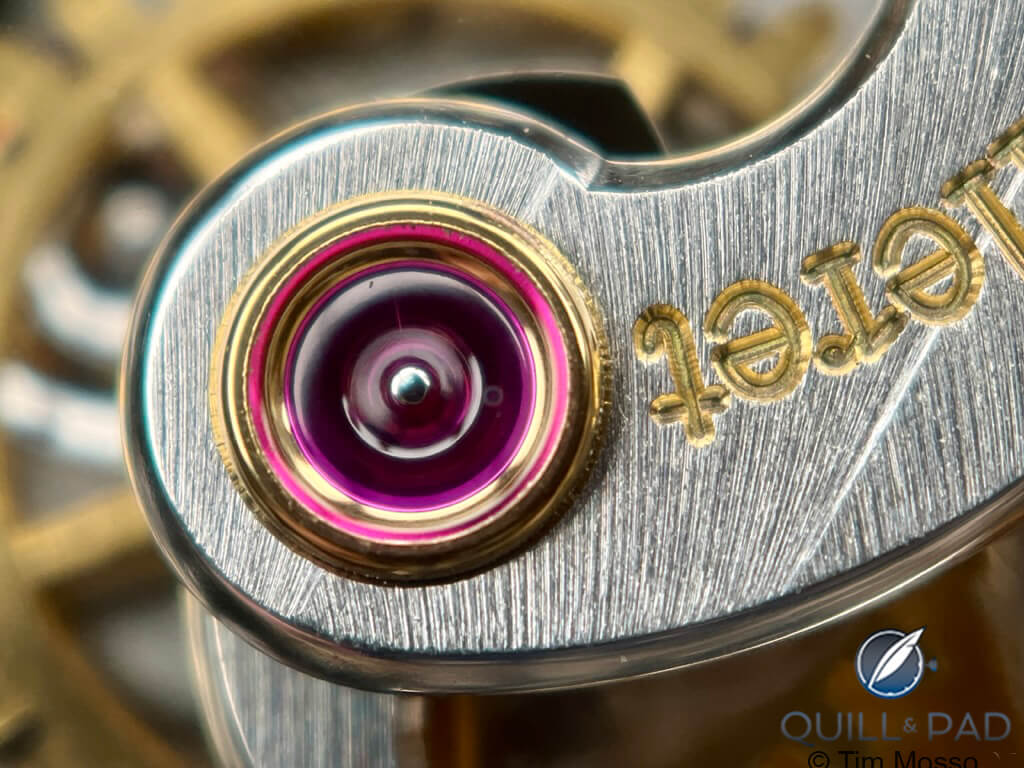
Minerva caliber 16.29 details
Returning to the steel chronograph hardware, consider its sharpness. Not only is the break between the satin tops and beveled edges surgically sharp, but the chronograph’s signature Minerva arrow tip looks like a Herculean task to micro-profile. Chronograph and drivetrain wheels feature internal beveling; many “Geneva hallmark” movements omit this step entirely.
—————————————————————————————————–
—————————————————————————————————–
From a technical standpoint, the caliber 16.29’s 55-hour power reserve is admirable for a veteran architecture. More interesting is the artistic approach to how Minerva caps the power source itself; this mainspring barrel ratchet wheel features extraordinary solarization, and its teeth are micro-beveled steel. For that matter, so are the teeth of the crown wheel.
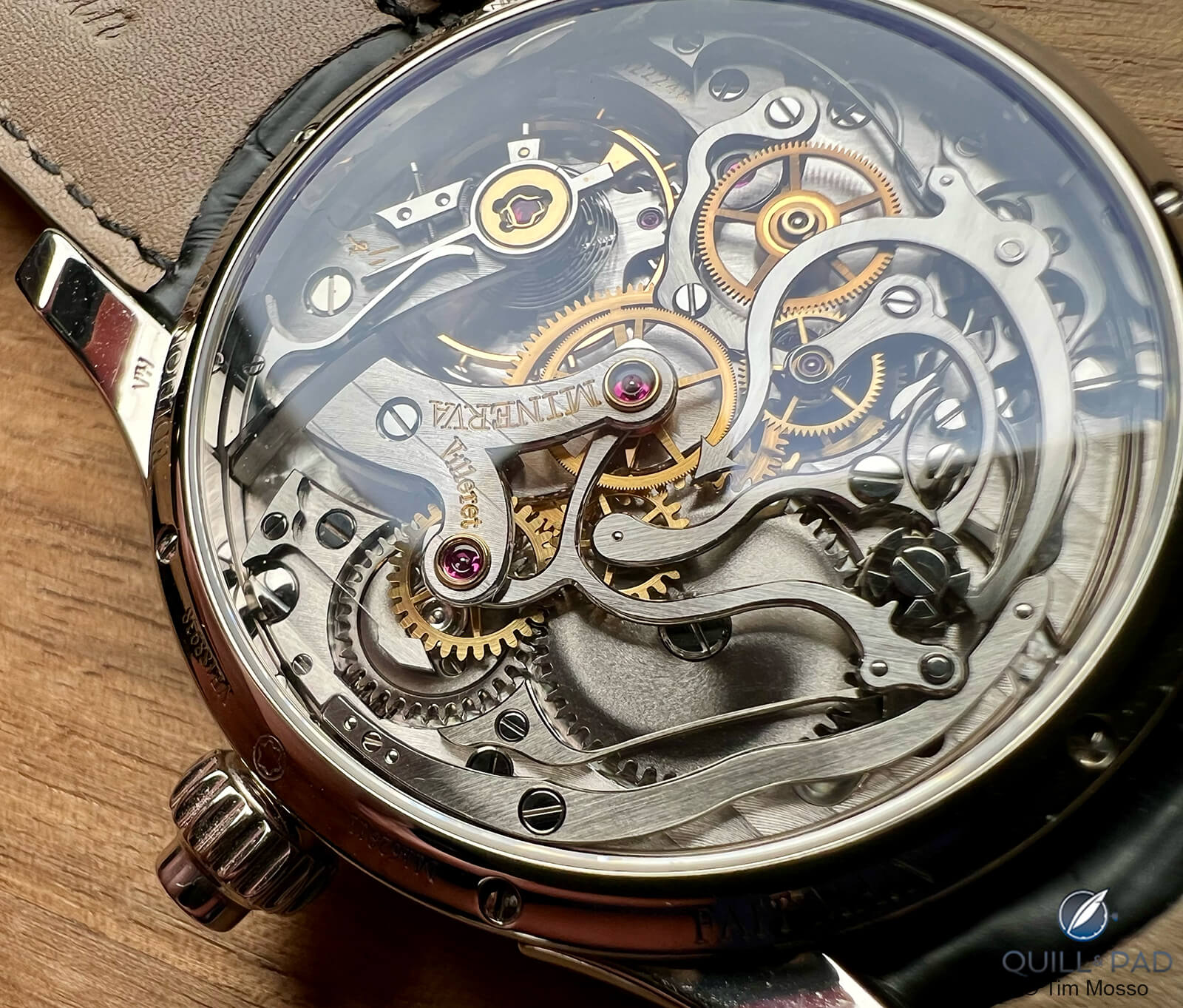
Minerva caliber 16.29 visible through the display back of the Montblanc Villeret 1858 Vintage Chronograph
Again, all of this can be and routinely is omitted on innumerable movements bearing the Poinçon de Genève, Qualité Fleurier, and engraved German silver. For watch collectors willing to embrace isolated products rather than assuming a binary acceptance or rejection of a brand label, Montblanc’s Minerva watches offer immense gratification.
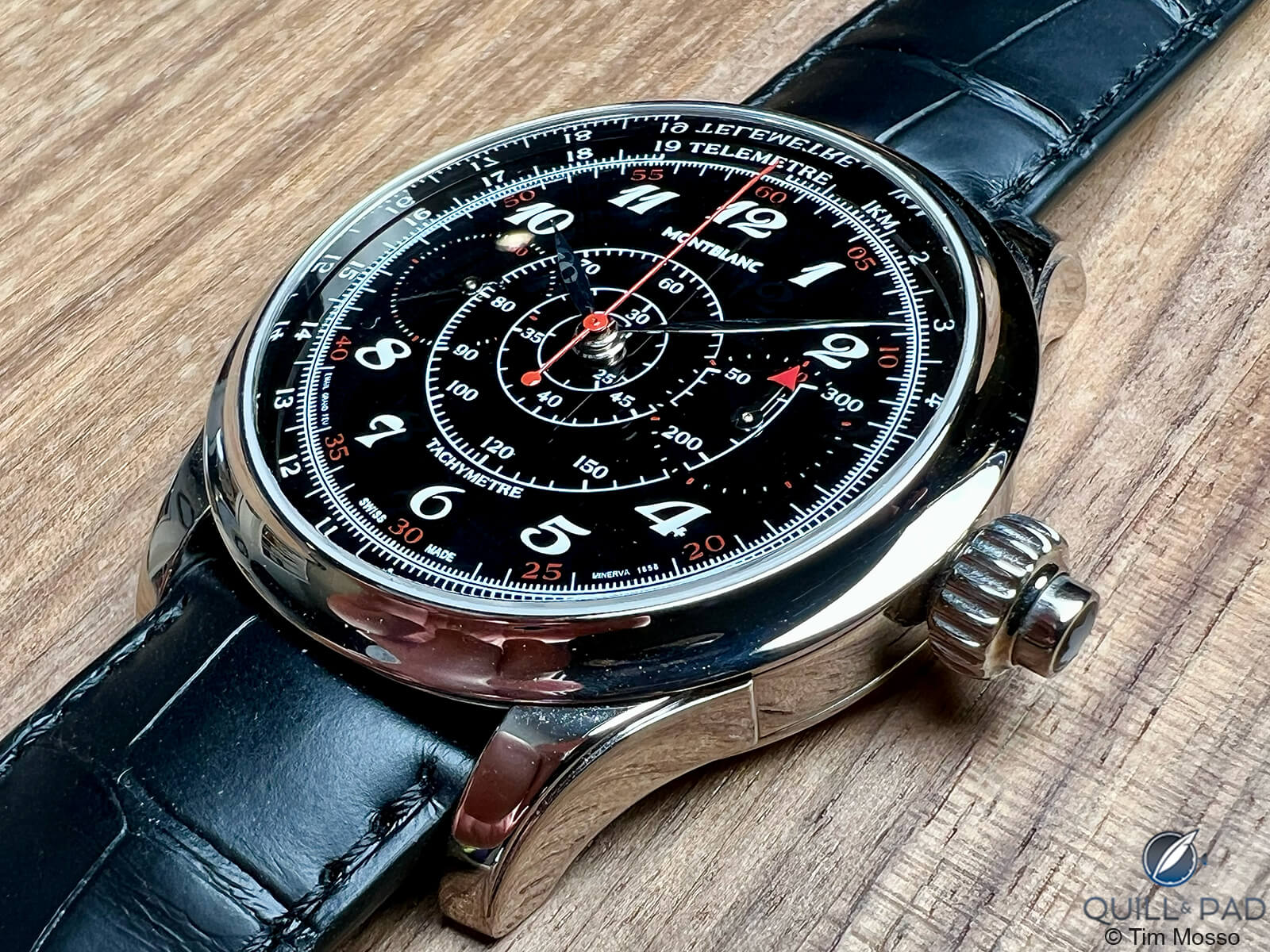
Montblanc Villeret 1858 Vintage Chronograph
No marriage of boutique manufacture with corporate luxury group is perfect, but from a pure product perspective, the union of Minerva and Montblanc must be declared a triumph. As of 2023, Montblanc’s haut-de-gamme watchmaking might has been mounting in the background for over a decade. Patek Philippe, A. Lange & Söhne, and Audemars Piguet soon may need to raise their pen games to keep pace.
For more information, please visit https://www.montblanc.com/en-us/collection/watches/montblanc-1858-collection
Quick Facts: Montblanc Villeret 1858 Vintage Chronograph
Edition: 58 pieces in each of rose and white gold in 2010
Reference Number: 106166
Case: white gold 43.5mm, 30-meter water resistance
Dial: black enamel with tachymeter and telemeter
Movement: Minerva 16.29, manual wind with 55-hour power reserve, 2.5hz, overcoil hairspring, column wheel, lateral clutch, 38.4mm diameter
Functions: hours, minutes, seconds, chronograph
Preowned Market Value: Approximately $20,000
* Tim Mosso is the media director and watch specialist at Watchbox. You can check out his very comprehensive YouTube channel at www.youtube.com/@WatchBoxStudios/videos
You might also enjoy:
Omega Seamaster Planet Ocean Ultra Deep Review by Tim Mosso
Montblanc 1858 Iced Sea Automatic Date: Ice Diving with the Brand’s First Diver’s Watch
Leave a Reply
Want to join the discussion?Feel free to contribute!

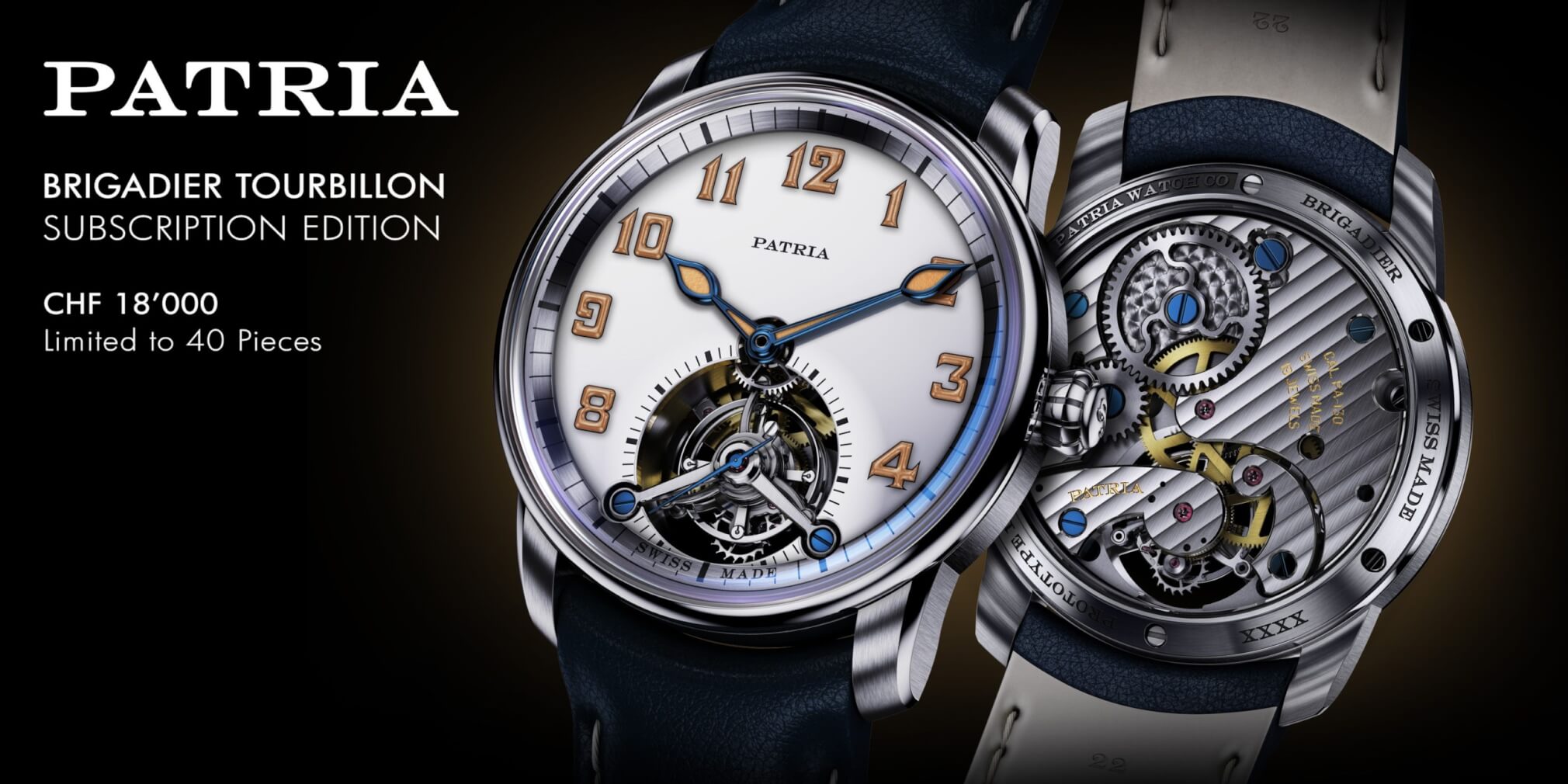
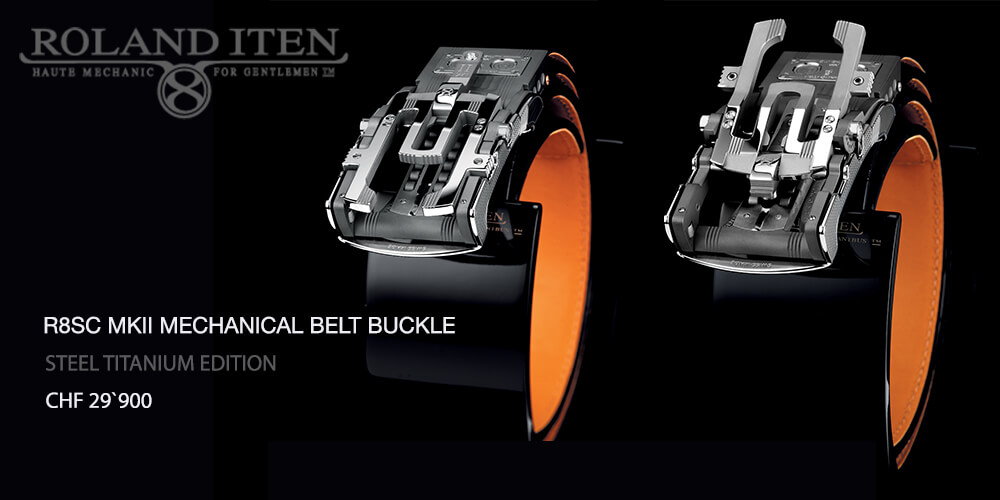
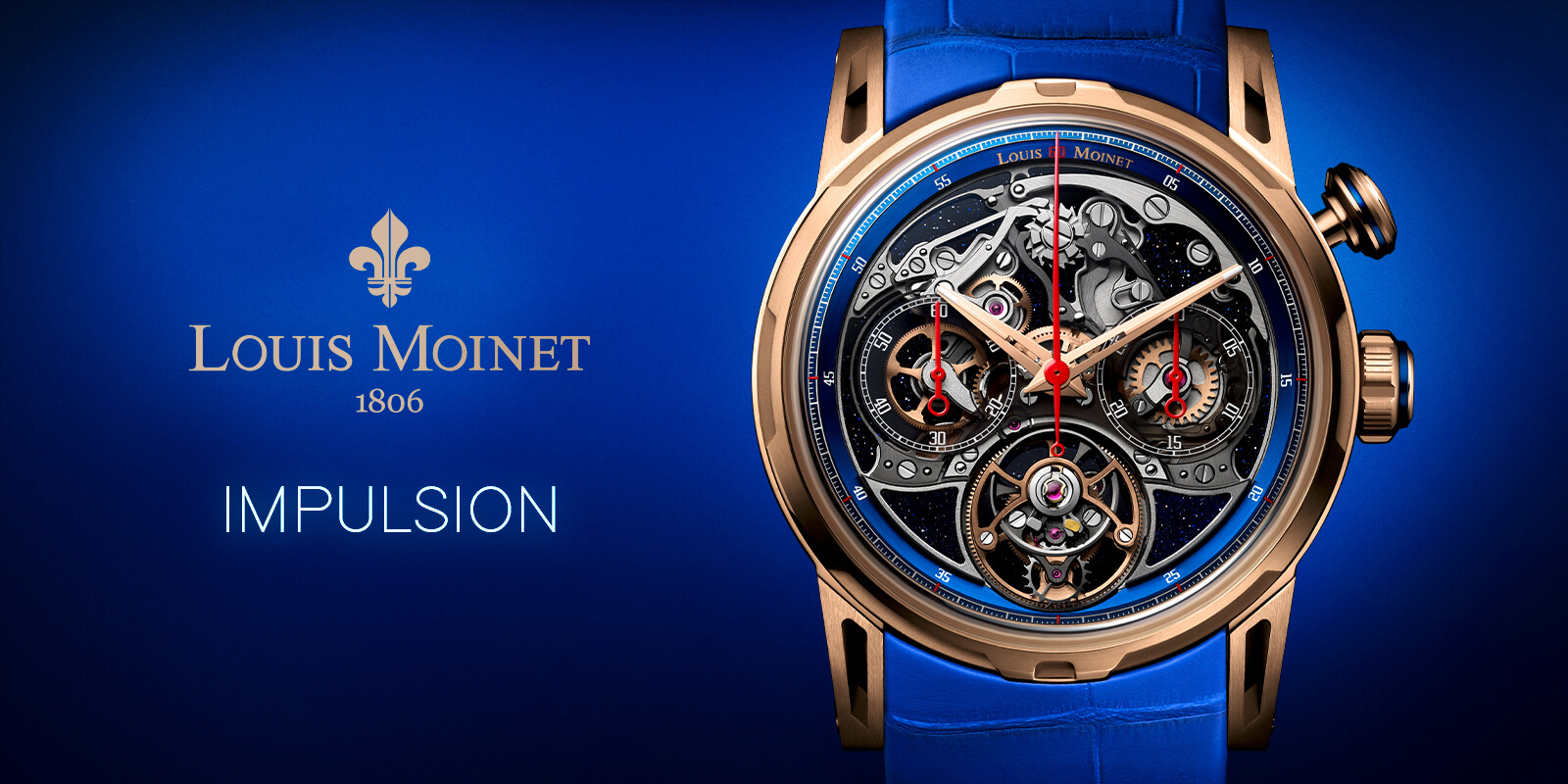
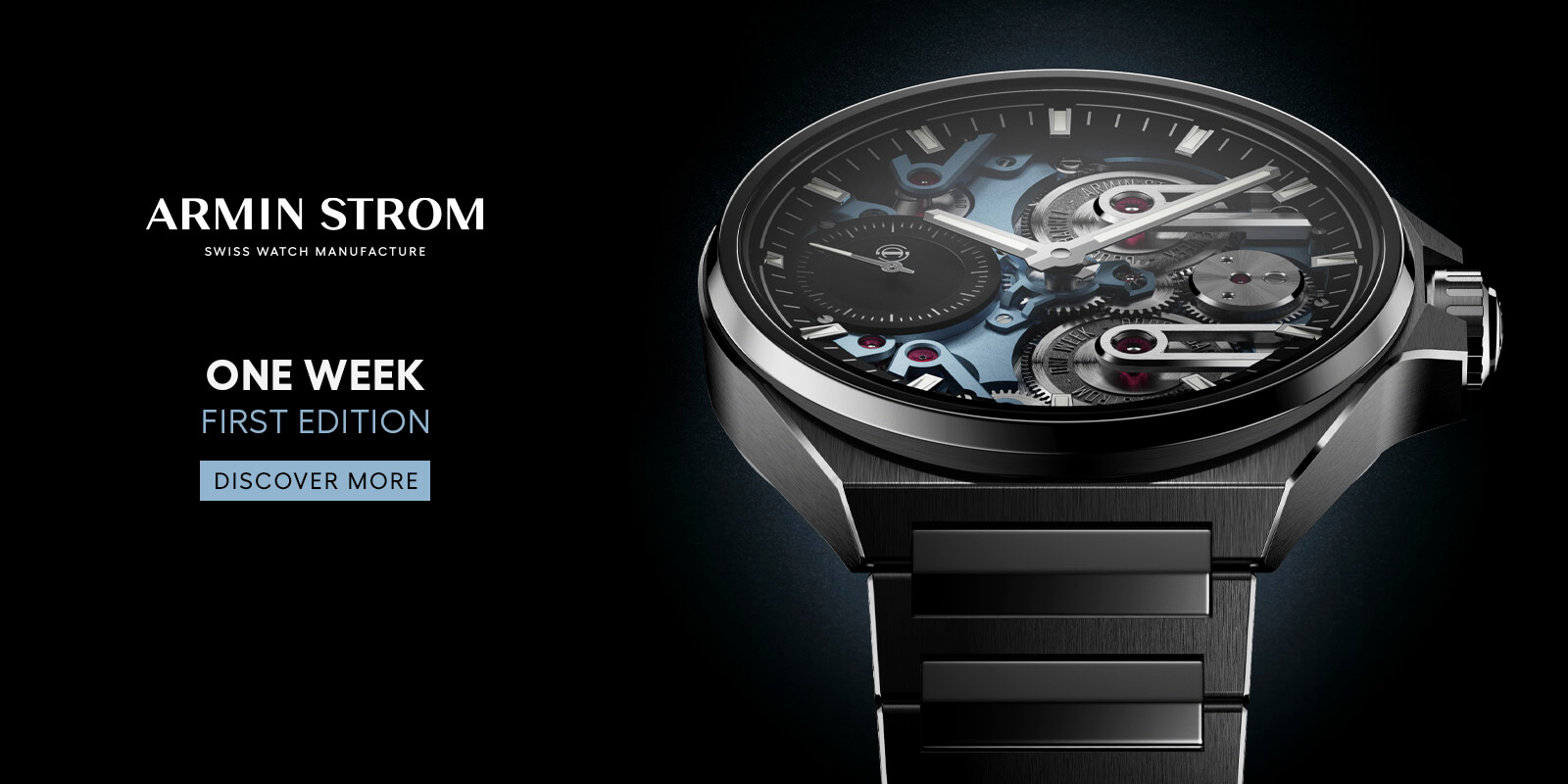
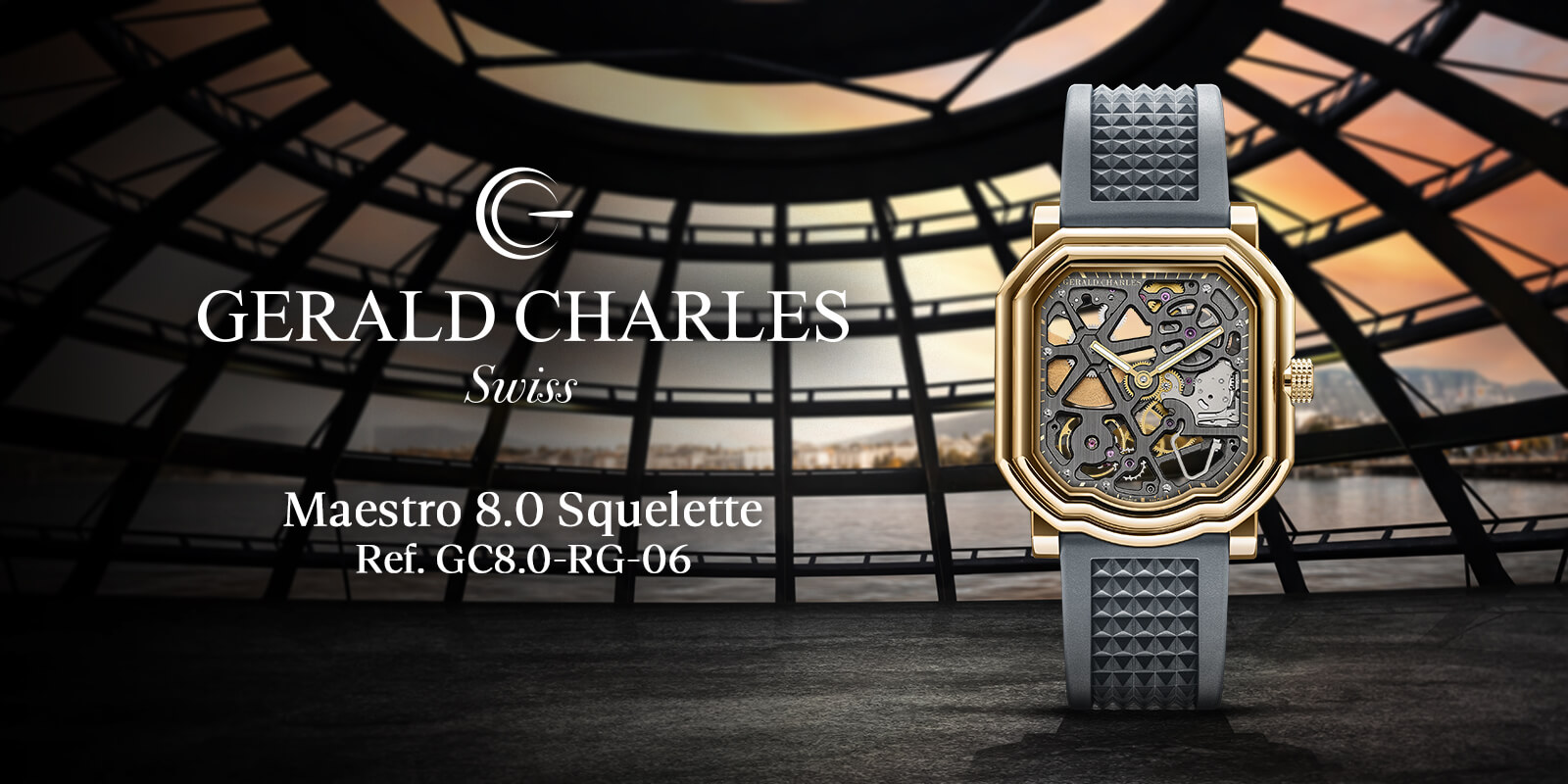


Where can I buy a replacement watch band for my MontBlanc watch?
Go to the Montblanc website and find your nearest Montblanc authorized dealer or boutique.
Regards, Ian
I have always found the hands on the main dial of Nicolas Rieussec’s monopusher chronograph to be very long.
Great article about a truly spectacular piece! Tim Mosso is haute horlogerie’s reigning Poet Laureate!
That the Villeret 1858 can be had for less than the price of a two-tone Daytona is deeply conflicting: both a shame and cause to give thanks to those “brand” afficionados referenced in the article. Full disclosure: I was once a member of that club.
As a lover of chronographs, I refused to give the Nicolas Rieussec a second look. Despite all the glowing reviews, I refused to believe a world class, manufacture chronograph could be the product of a brand known exclusively as the maker of prohibitively expensive fountain pens … until I actually broke down and bought one.
As truly exceptional as the Rieussec is, Montblanc’s Minerva offerings represent a whole ‘nother quantum leap in watchmaking. The mere thought that a watch like this is even attainable, warms my — at times — cold and jaded collector’s heart.
If Montblanc had chosen to draw a clear and distinct line between it’s Le Locle and Villeret offerings by establishing a seperate marque and simply branding the latter as “Minerva” — demand (and prices) would double or triple.
One final thought in closing: before you post pics of a movement as stunning as the Caliber 16.29, please give me a 10 second warning so I can strap on the ol’ drool cup! A drop-dead gorgeous machine right down to its trademark devil’s tail! …